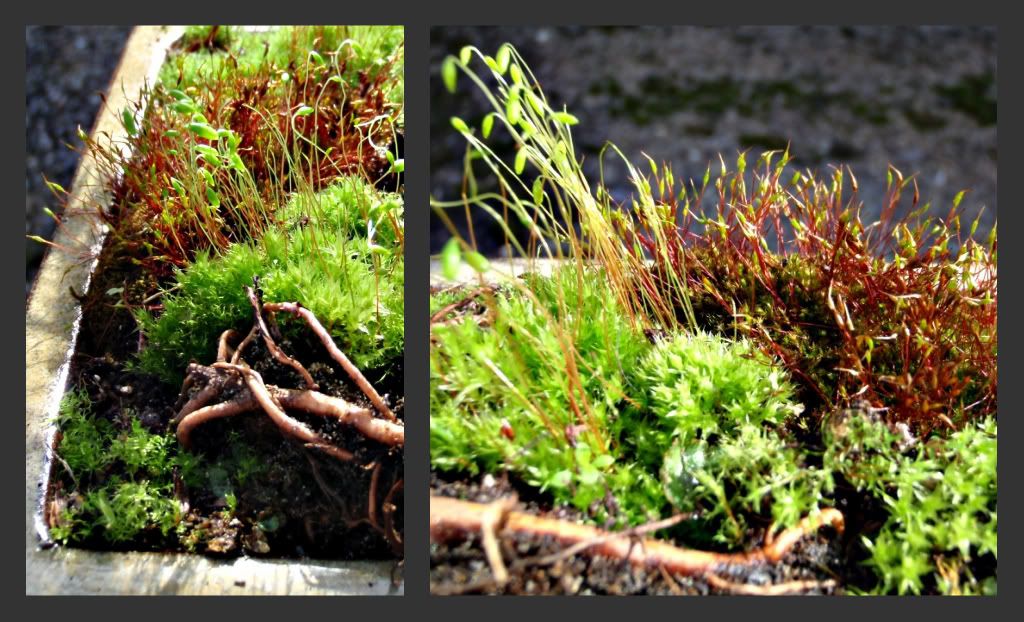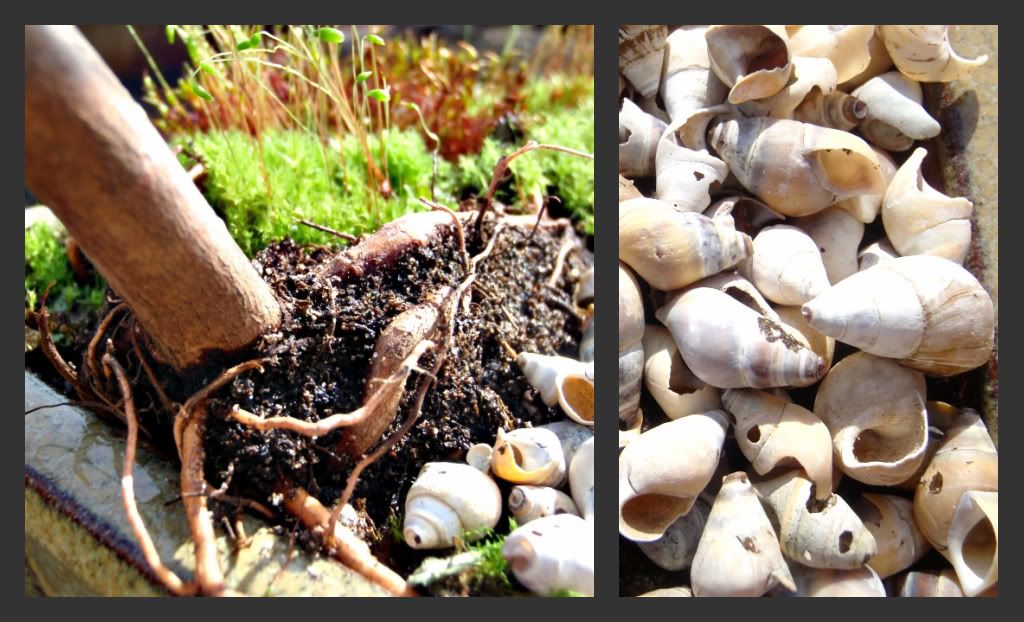Bonsai is an ancient Japanese art form - pruning and shaping a small woody tree to create the illusion of a very old tree in miniature. The word Bonsai can be broken down into two parts: Bon meaning tray, and sai meaning tree translating literally to Tree in a Tray and is an adaptation of the earlier Chinese word Penjing.
In the fall I chose a 2year old Canadian Hemlock (Tsuga canadensis) specimen to create my Bonsai from. Any plant that develops a woody trunk can be formed into a Bonsai provided it tolerates pruning well. There are a number of specific Bonsai "forms" that can be created - I chose the windswept form. We used wire to shape the main branches and pruned any extras to create the form we wanted and then left the plants in their original pots in the polyhouses over the winter.
 Today we stripped the roots bare, pruned them back by 1/3 and potted them in a potting mix that we created for ideal drainage and nutrients: 1/3 sand, 1/3 peat moss, 1/3 compost. After we potted them I chose to decorate my Bonsai with two types of moss I had found growing in the container and some shells I collected from Lake Erie last summer. I was going for a windswept beachside look especially since the moss shoots look a little bit like reeds and I was also really happy how the butress roots were exposed. One of my favourite classes yet this year!
Today we stripped the roots bare, pruned them back by 1/3 and potted them in a potting mix that we created for ideal drainage and nutrients: 1/3 sand, 1/3 peat moss, 1/3 compost. After we potted them I chose to decorate my Bonsai with two types of moss I had found growing in the container and some shells I collected from Lake Erie last summer. I was going for a windswept beachside look especially since the moss shoots look a little bit like reeds and I was also really happy how the butress roots were exposed. One of my favourite classes yet this year!
If you would like to see some other great specimens of Bonsai and Penjing the US National Arboretum has a virtual tour of their collection. The Montreal Botanical Gardens have some photos of their collection as well as great information about indoor bonsai, basic care of Bonsai, and suggestions for tree and shrub selection.




No comments:
Post a Comment